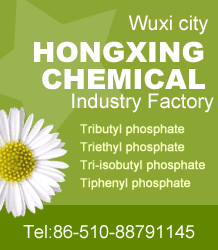Acesulfame-K
Inquiry
| Post Date: | Mar 27,2019 |
| Expiry Date: | Sep 23,2019 |
| Detailed Description: |
Cas No. :55589-62-3
Quantity: 1FCL Specs:FCC IV Price:1 USD Metric Tons Payment Method: LC, T/T, DP Acesulfame potassium is a calorie-free artificial sweetener, also known as Acesulfame K or Ace K (K being the symbol for potassium), and marketed under the trade names Sunett and Sweet One. In the European Union, it is known under the E number (additive code) E950. It was discovered accidentally in 1967 by German chemist Karl Clauss at Hoechst AG (now Nutrinova). [1] In chemical structure, acesulfame potassium is the potassium salt of 6-methyl-1, 2, 3- oxathiazine-4(3H)-one 2, 2-dioxide. It is a white crystalline powder with molecular formula C4H4KNO4S and a molecular weight of 201.24. Acesulfame K is 180-200 times sweeter than sucrose (table sugar), as sweet as aspartame, about half as sweet as saccharin, and one-quarter as sweet as sucralose. Like saccharin, it has a slightly bitter aftertaste, especially at high concentrations. Kraft Foods has patented the use of sodium ferulate to mask acesulfame's aftertaste. Acesulfame K is often blended with other sweeteners (usually sucralose or aspartame). These blends are reputed to give a more sugar-like taste whereby each sweetener masks the other's aftertaste, and/or exhibits a synergistic effect by which the blend is sweeter than its components. Unlike aspartame, acesulfame K is stable under heat, even under moderately acidic or basic conditions, allowing it to be used in baking, or in products that require a long shelf life. In carbonated drinks, it is almost always used in conjunction with another sweetener, such as aspartame or sucralose. As with aspartame, saccharin, sucralose, and other sweeteners that are sweeter than common sugars, there is concern over the safety of acesulfame potassium. Although studies of these sweeteners show varying and controversial degrees of dietary safety, the United States Food and Drug Administration (USFDA) has approved these for use as general-purpose sweetening agents. Critics of the use of acesulfame potassium say the chemical has not been studied adequately and may be carcinogenic, although these claims have been dismissed by the USFDA and by equivalent authorities in the European Union. ITEM STANDARD APPEARANCE WHITE CRYSTALLINE POWDER ASSAY 99.0% ~ 101.0% SOLUBILITY IN WATER FREE SOLUBLE SOLUBILITY IN ALCOHOL SLIGHTLY SOLUBLE ULTRAVIOLET ABSORPTION 227±2NM TEST FOR POTASSIUM POSITIVE PRECIPITATION TEST YELLOW PRECIPITATE LOSS ON DRYING ≤0.5% ORGANIC IMPURITIES ≤20MG/KG FLUORIDE ≤3MG/KG HEAVY METALS ≤5MG/KG LEAD ≤1MG/KG ARSENIC ≤3MG/KG SELENIUM ≤10MG/KG PH 6.5 ~ 7.5 2 Characteristics and advantages Intensive sweetness, 200 times as sweet as sucrose in 3% solution No absorbing moisture and no peculiar smell Readily soluble and highly stable in water Stable under high temperature and acid conditions Having neither toxin nor by-effects Having low-caloric value and no raising blood glucose level, especially suitable for diabetics No causing tooth decayed A wide range of application (foods, beverages, pharmaceuticals, personal care products, table-top sweeteners, etc.) Introducing a healthy image for final products (clean taste, tooth-protecting, sugar-gree, etc.) Reducing production cost, maintaining or prolonging shelf-life Having synergistic effect when used in combination with sucrose, aspartame and other sweeteners, remarkably increasing sweetness 3 Application ofAcesulfame-K In 1967, Acesulfame-K was discovered. In 1983, EU approved the use of Acesulfame-K in foods and beverages. In 1988, FDA approved the use of Acesulfame-K in tabletop sweeteners, chewing gums and instant coffee. In 1992, China approved the use of Acesulfame-K in foods and beverages. In 1994, FDA approved the use of Acesulfame-K in syrup, baked foods and dairy products. In 1995, FDA approved the use of Acesulfame-K in alcoholic beverages. In 1998, FDA approved the use of Acesulfame-K in non-alcoholic beverages. In 2000, Japan approved the use of Acesulfame-K. ADI of Acesulfame-K set by FAO/WHO JECFA: 9mg/kg body weight ADI of Acesulfame-K set by FDA: 15mg/kg body weight Acesulfame K is widely used in food, beverage, oral hygiene/cosmetics (used for lipstick, lip gloss, toothpaste and gargle, etc.) and agent (for syrup, sugar coated tablet, bitter medicine screening agent, etc.), etc. |
| CAS Registry Number: | 55589-62-3 |
| Synonyms: | ;Acesulfamum Kalicum;Acesulfame-K;Potassium Salt of 6-methyl-1,2,3-oxathiazin-4(3H)-one-2,2-dioxide;6-methyl-1,2,3-oxathiazin-4(3h)-one 2,2-dioxide potassium salt;Acesulfame k;6-Methyl-1,2,3-Oxathiazin-4(3H)-One-2,2-Dioxide,Potassium Salt;Sunette;Sweet One;potassium salt of 6methyl-1,2,3-oxathiazine-4(3H)-one-2,2-dioxide;acesulfame k fcciv;potassium 6-methyl-1,2,3-oxathiazin-4-olate 2,2-dioxide; |
| Molecular Formula: | C4H4KNO4S |
| Molecular Weight: | 201.2422 |
| Molecular Structure: | 
|
| Company: | JK Bio-Chem Co., Ltd. [ China ] |
| Contact: | Terry |
| Tel: | +86-0731-88689669 |
| Fax: | +86-0731-88689665 |
| Email: | xuqihn@163.com |
-
Disclaimer statement:The information and data included above have been realized by the enterprises and compiled by the staff, and are subject to change without notice to you. The Chemnet makes no warranties or representations whatsoever regarding the facticity, accuracy and validity of such information and data. In order to ensure your interest, we suggest you chose the products posted by our gold suppliers or VIP members.


